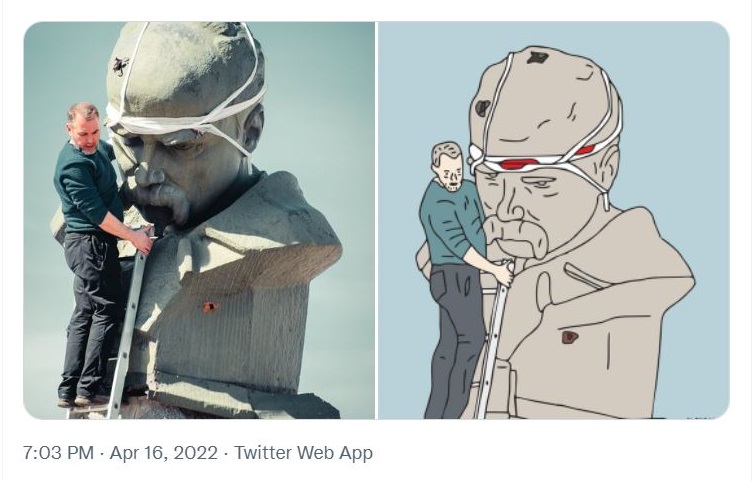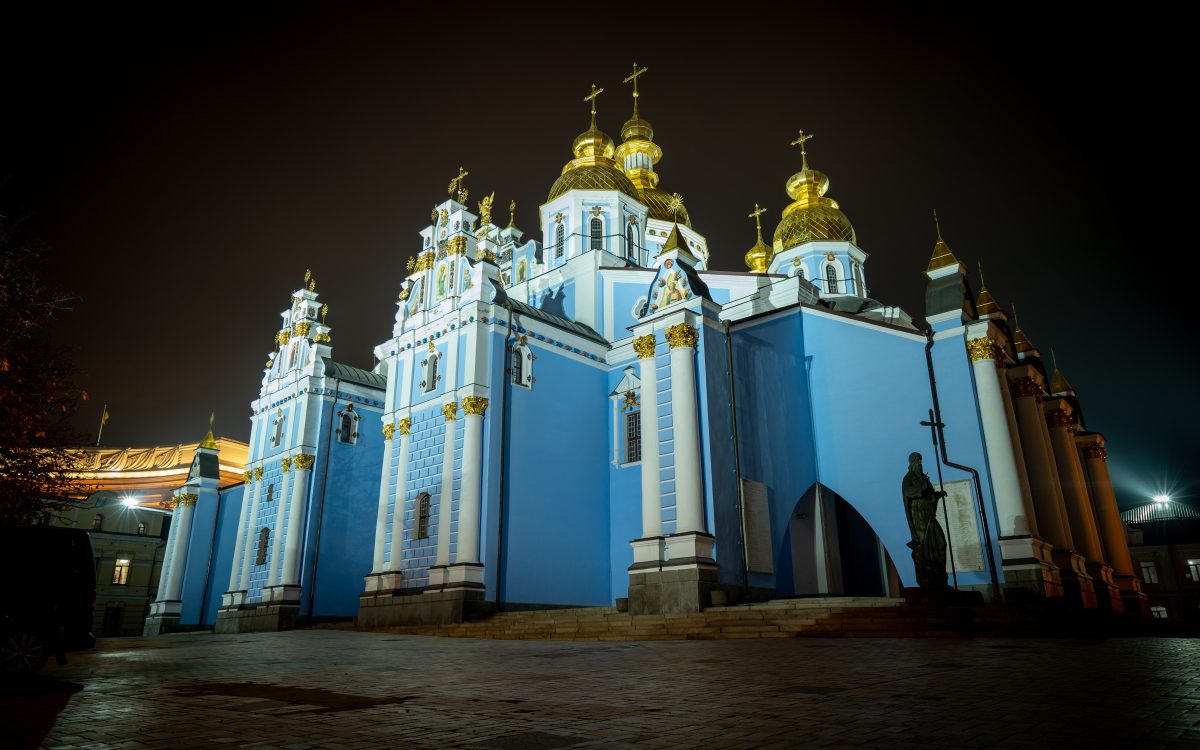As the devastating impacts of the war in Ukraine continue to be beamed worldwide, a growing number of Ukrainian cultural icons and monuments are also under attack. Already, a museum in Ivankiv – a city north-west of Kyiv – that housed works by cherished Ukrainian folk artist Maria Prymachenko has been destroyed, as well as several cultural buildings in the city of Kharkiv’s Freedom Square, including the Kharkiv State Academic Opera and Ballet Theatre and the Kharkiv Philharmonic.
Unfortunately, targeting cultural treasures is nothing new in times of war, and history shows that there are often specific and deliberate motives for the destruction of art icons in wartime.
Why are cultural icons targeted in warfare?
Nikolas Orr is a PhD candidate and research assistant at the Centre for the Study of Violence, School of Humanities, Creative Industries and Social Sciences at the University of Newcastle, and has a special interest in the treatment of cultural monuments, especially as it relates to the history of iconoclasm.
Orr told ArtsHub that he regards Russia’s actions in damaging monuments in Ukraine as reflecting some of the classic reasons why cultural icons come under fire in wartime.
‘I can think of four main reasons why icons are targeted during war,’ Orr said. ‘The first reason is as a form of cultural genocide – that’s about destroying any evidence that a culture even exists.
‘The second is for reasons of monetary gain,’ he continued. ‘So you could think of the looting and pillaging that the Taliban did in Afghanistan – the larger, immovable monuments they would destroy, but the smaller antiquities they would take and sell on the black market.
‘The third one is similar to the second, being about building collections of art – extracting artefacts from war-torn territories to add value to collections in other countries. Think of the Benin bronzes in the British Museum. And the fourth is about weakening enemy morale,’ Orr said, adding that he suspects Russia’s current destruction of Ukraine’s cultural icons fits the final category, with ideas of cultural genocide likely entangled in their motives.
Read: Ukraine’s cultural heritage faces destruction
Orr also commented on what he sees as a somewhat surprising element of Russia’s targeting Ukraine’s cultural monuments, given both nations’ historical ties.
‘Some people have been really stunned that Russia would be so aggressive towards Ukraine’s capital Kyiv, because historically, Kyiv is the birthplace of the predecessor to Russia. It’s where key events occurred that enabled what would later bring Russia into being,’ he said.
‘So perhaps their intentions to destroy those monuments are not as fine-grained as that. It could be more that they are thinking, “We’ll destroy them despite the costs to our own heritage, as it’s going to weaken Ukrainian morale.”’
Why cultural monuments are vigorously defended
As the world watches in horror as these cultural monuments are damaged or destroyed, there is also evidence of current actions underway by ordinary Ukrainians to defend these structures from annihilation.
For European researcher Julie Deschepper, who is currently working at Florence’s German Art History Institute (part of the Max Planck Institut) and whose work also focuses on the history of cultural heritage, these civilians’ actions speak directly to the strength of their connections to their culture and national identity.
Just as enemy forces are trying to deny a culture exists, people look to these monuments as proof that a unique culture does exist.
Julie Deschepper, cultural heritage researcher, German Art History Institute, Florence.
‘And so they are using the monuments as proof of their survival and as a strong symbol of their culture. In this case, Ukrainians are positioning themselves as safe-guarders of that culture.’
Orr agrees that the images emerging of attempts to protect Ukraine’s cultural icons has potent symbolic power: ‘The optics of it suggest a real sense of pathos,’ he commented. ‘But there’s also a certain heroism – it shows the imbalance of power between those who are invading with modern war machines, and the people defending their heritage in sometimes very rudimentary ways.’
From Julie Deschepper’s perspective, the determination to save cultural icons can be traced to these monuments as public, visual embodiments of our collective selves.
‘Why do we feel the need for these monuments to last forever? It goes back to what we understand a monument to be, and its capacity to speak to those questions of “What is our past?”, and, “What is our idea of the future?”,’ she remarked.
Saving art in wartime has its own dangers
Deschepper told ArtsHub that since the scale of damage to Ukraine’s cultural heritage has been realised, the international community is taking action to help.
‘In the beginning, we were seeing very improvised attempts to try and save these monuments and art pieces, but now, the international community – for instance ICOM (International Council of Museums) – are acting very quickly to help.
‘They are sending specialist materials like boxes and fire-resistant materials to Ukrainian museums all the time, and on social media, they are calling for more resources to be collected and sent to Ukraine on a daily basis.’

Orr added that agencies such as Blue Shield International – often referred to as the cultural heritage equivalent of the Red Cross – can also be important players in these rescue missions.
Perhaps the most famous agency to protect cultural artefacts during wartime is the now-disbanded Monuments, Fine Arts, and Archives program – or the Monuments Men (portrayed in the 2014 Hollywood film of the same name) –who worked from 1943 – 1946 to rescue many valuable art works stolen by the Nazis during WWII.
On the flipside of these success stories, there are unfortunately also examples of people paying the highest price for their protection of cultural heritage. Orr cites the death of legendary Syrian archaeologist Kaled al-Assad in 2015 as one of the most shocking modern day outcomes.
‘Kaled al-Assad was the head of antiquities in the UNESCO World Heritage listed ancient city of Palmyra. But he was tortured and killed by ISIS militants for attempting to protect what they held to be [blasphemous] idols,’ Orr said.
‘That just shows you how strongly people on both sides feel about these objects. On the one side, they contain our identity and our cultural values, and so are worth protecting even with our own lives. We feel compelled to treat them not as inanimate objects, but living things. On the other side, the fact these objects are so prized makes them perfect targets,’ he concluded.




